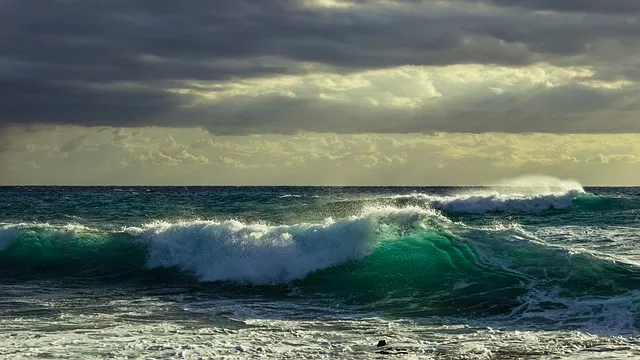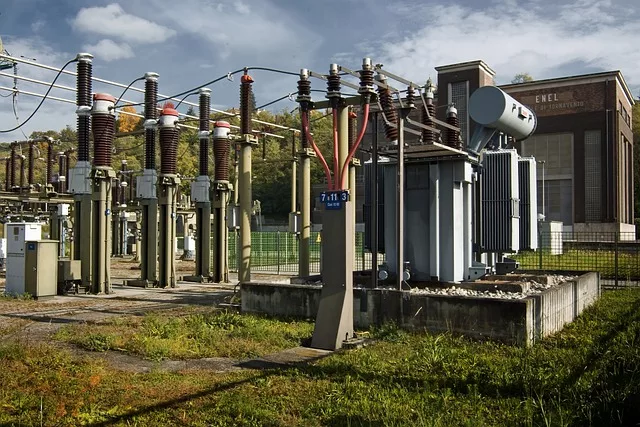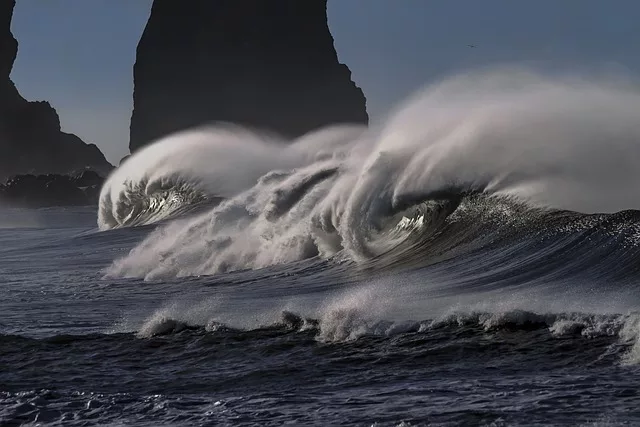Wave power, also known as ocean Wave power, is a form of renewable energy that is generated from the movement of ocean waves. The energy generated by waves is caused by the wind blowing over the surface of the ocean, creating ripples that travel across the water.
These ripples, or waves, contain a significant amount of power, which can be harnessed and converted into usable electricity. Wave energy technology has been under development for several decades, and there are several different types of Wave power conversion systems currently being tested and implemented around the world. These include wave energy converters, wave energy buoys, and oscillating water columns. Wave power has the potential to play a significant role in meeting the world’s growing energy demands, especially in coastal regions.
Advantages:
Renewable energy source:
Wave power is a renewable energy source that is generated from the movement of ocean waves.
Low emissions:
Wave power does not produce any greenhouse gas emissions, making it a clean energy source.
Reliable:
Ocean waves are a consistent and predictable energy source, making wave energy a reliable source of energy.
Low maintenance:
Once wave power plants are built, they require minimal maintenance.
Can be used in conjunction with other forms of energy:
Wave power can be used in conjunction with other forms of renewable energy, such as wind and solar power, to increase the overall effectiveness of the energy system.
Disadvantages:
High initial costs:
Building wave energy plants can be expensive, and the technology is still relatively new, so costs may be high.
Limited geographic locations:
wave energy is only available in certain coastal areas, limiting its potential as a widespread energy source.
Environmental impact:
Wave power plants can have negative impacts on marine life and coastal ecosystems.
Weather dependent:
Wave energy generation is dependent on weather conditions, which can limit its reliability as an energy source.
Need for advanced technology:
Wave energy requires advanced technology, which is still being developed and may not be accessible to all countries.
What is the cost-effectiveness of wave power with respect to other sources?
The cost of wave energy compared to other sources of energy can vary depending on several factors, such as location, the technology used, and the maturity of the industry. However, wave power is considered to be more expensive than other forms of renewable energy, such as wind and solar power, due to the high costs of building and maintaining wave power plants.

According to the International Renewable Energy Agency (IRENA), the Levelized cost of electricity (LCOE) for wave power ranges between 40-80 US cents per kilowatt-hour (kWh), which is higher than the LCOE of onshore wind power (35-60 US cents/kWh) and utility-scale solar power (20-40 US cents/kWh).
However, it’s important to note that wave energy technology is still in the early stages of development, and as the industry matures, the costs are expected to decrease. Furthermore, the cost of wave energy may be more competitive in certain regions, such as island nations or remote coastal areas where the cost of importing fossil fuels is high.
Additionally, wave power has the potential to provide additional benefits, such as desalination, which can offset the costs.
Overall, wave energy is considered to be more expensive than other forms of renewable energy, but costs are likely to decrease as the technology and industry mature, and in specific locations, the cost of wave power may be more competitive with other forms of energy. Regenerate response
Question and Answer
- What are some of the technical challenges associated with wave power systems?
- wave energy systems can be complex and difficult to maintain, particularly in harsh marine environments. There are also challenges associated with designing systems that can withstand the constant wear and tear of the ocean.
- Why is wave energy considered to be a costly energy source?
- Wave power systems can be costly to install and maintain. The high initial costs make it difficult for small-scale projects to become financially viable.
- How does wave energy impact coastal ecosystems and marine life?
- While wave energy systems have a low environmental impact compared to other forms of energy production, they can still have negative effects on marine life and coastal ecosystems. This includes the potential for damage to coral reefs and other sensitive habitats.
- Why is wave power considered to be limited in its geographical availability?
- wave energy is only available in certain coastal areas where there are strong and consistent ocean waves. This limits the potential for wave energy to be used as a global energy source.
- How does wave energy interfere with other activities in the ocean?
- Wave power systems can interfere with other ocean activities such as fishing and shipping, which can lead to conflicts with coastal communities and industries.
- Also read: Hail Damage Roof Replacement Cost Allen




